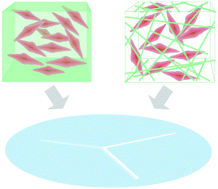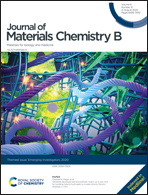From cells-on-a-chip to organs-on-a-chip: scaffolding materials for 3D cell culture in microfluidics
Abstract
It is an emerging research area to integrate scaffolding materials in microfluidic devices for 3D cell culture (organs-on-a-chip). The technology of organs-on-a-chip holds the potential to obviate the gaps between pre-clinical and clinical studies. As accumulating evidence shows the importance of extracellular matrix in in vitro cell culture, significant efforts have been made to integrate 3D ECM/scaffolding materials in microfluidics. There are two families of materials that are commonly used for this purpose: hydrogels and electrospun fibers. In this review, we briefly discuss the properties of the materials, and focus on the various technologies to obtain the materials (e.g. extraction of collagen from animal tissues) and to include the materials in microfluidic devices. Challenges and potential solutions of the current materials and technologies were also thoroughly discussed. At the end, we provide a perspective on future efforts to make these technologies more translational to broadly benefit pharmaceutical and pathophysiological research.

- This article is part of the themed collections: Editor’s Choice: Microfluidics and Journal of Materials Chemistry B Emerging Investigators


 Please wait while we load your content...
Please wait while we load your content...